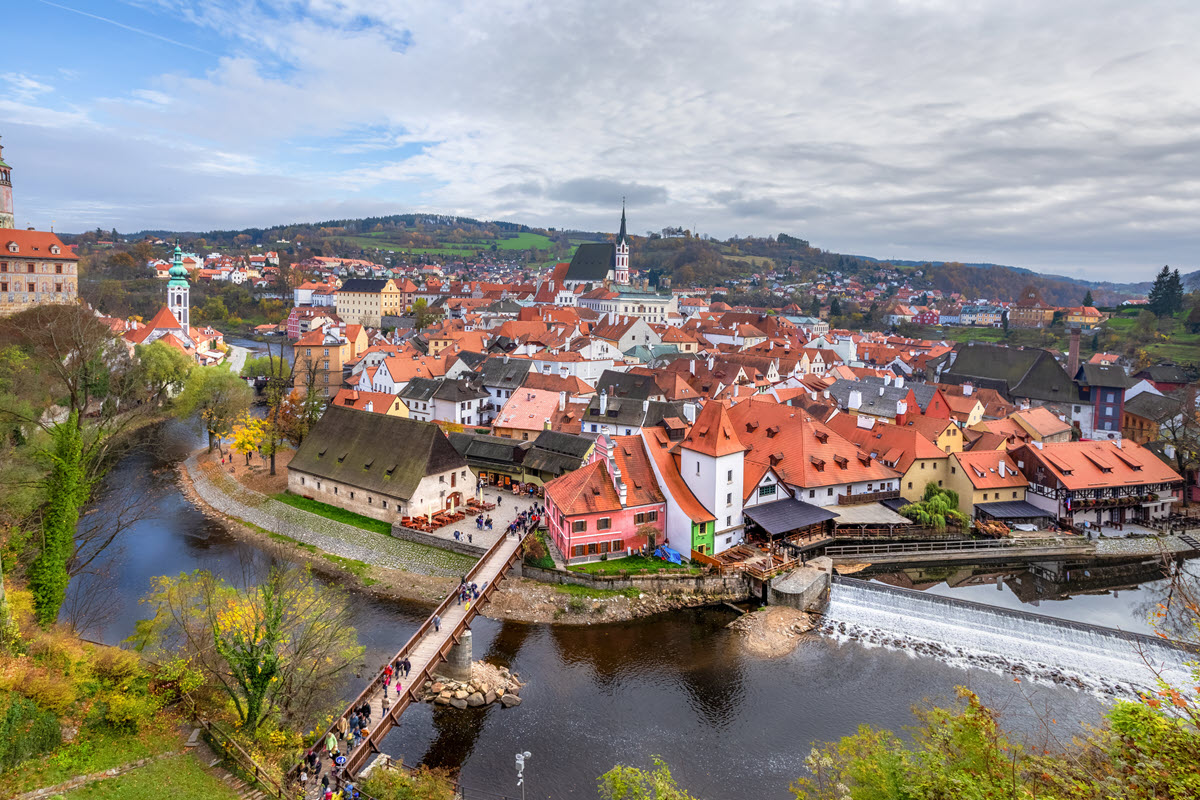The Czech Republic is also commonly known just as Czechia. It’s a landlocked country located in Central Europe and was historically known as Bohemia. The country covers an area of 78,866 sq km (30,450 sq mi), making it slightly smaller than the US state of South Carolina. The country has a population of 10.7 million.
The Czech Republic is known for its beautiful capital Prague with world-famous attractions such as Charles Bridge. It’s also known for its many renowned castles, the world’s longest suspension footbridge, and for its excellent beers. Czechia citizens are also the world’s biggest consumers of beer.
Prague
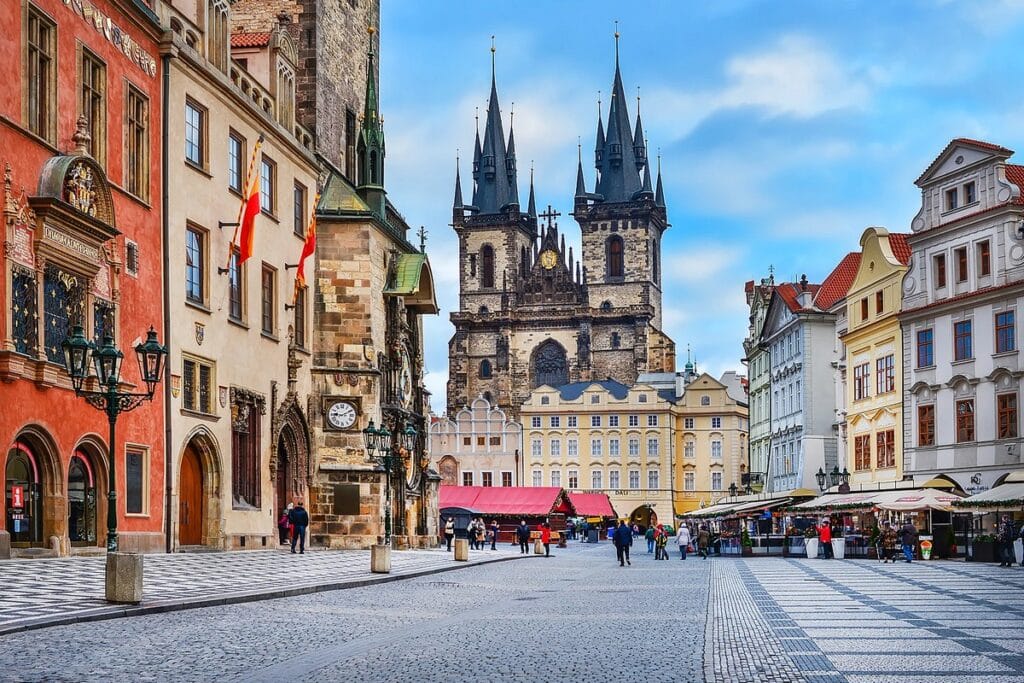
Prague is the country’s capital and is often nicknamed “the City of a Hundred Spires,” although this is technically incorrect given that there are much more.
Locals often describe the city as Matka měst – ‘mother of all cities’ – or zlatá Praha – ‘golden Prague.’ This beautiful city is known for a number of attractions. In particular, visitors flock to the Old Town Square, the medieval Astronomical Clock, and the Charles Bridge.
The city has become increasingly more popular in recent years. Hence, while it can’t be described as a hidden gem anymore, it’s still more affordable than other popular western European capitals.
Prague Castle
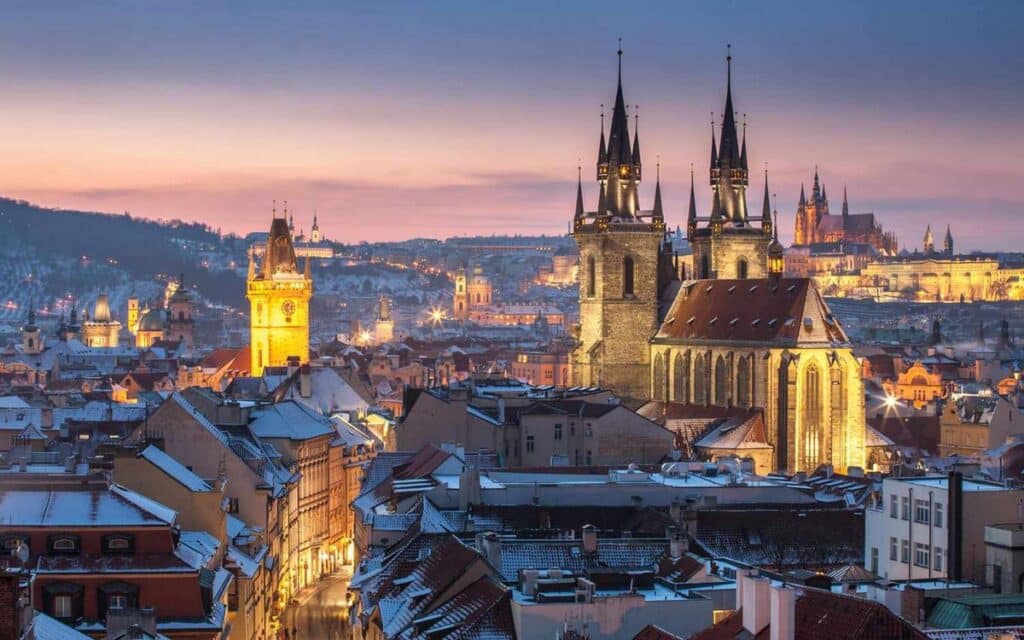
Prague Castle is estimated to have been founded around the year 880 by Prince Bořivoj of the Premyslid Dynasty (Přemyslovci). Today the Guinness Book of World Records has classified Prague Castle as the world’s largest coherent castle complex. The entire complex spans an area of around 70,000 m² (753473,73 ft2).
The castle has been home to some of the most prominent players in Eastern European history. Holy Roman Emperors, the Habsburgs, and Bohemian kings have all called the castle home at some point.
St. Vitus Cathedral
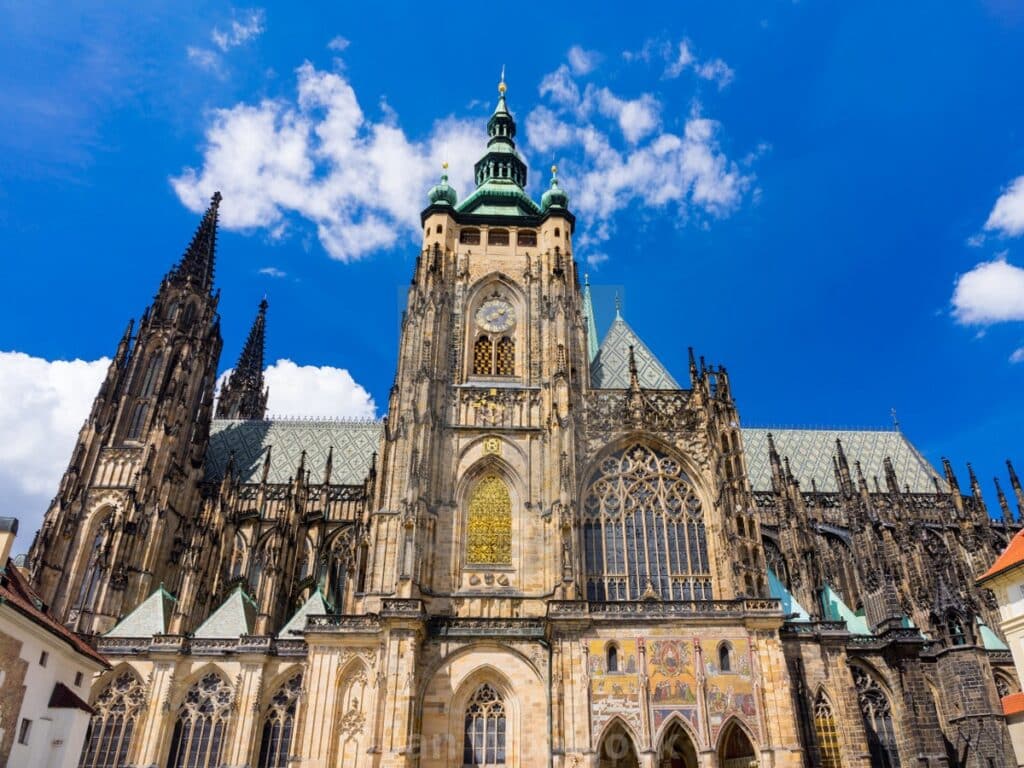
The cathedral forms part of the Prague Castle complex. It’s mostly known for being home to the tomb of the country’s most esteemed saint, St. Wenceslas, as well as the Bohemian Coronation Jewels.
The cathedral has a long history, and it grew with Prague as the city’s prominence increased. However, the founding of the cathedral can be traced back to the year 925, when a chapel was built on the site.
Visitor highlights include the stained glass windows, the bronze doors adorned with ornate reliefs, and the Royal Mausoleum.
Charles Bridge (Karluv Most) in Prague
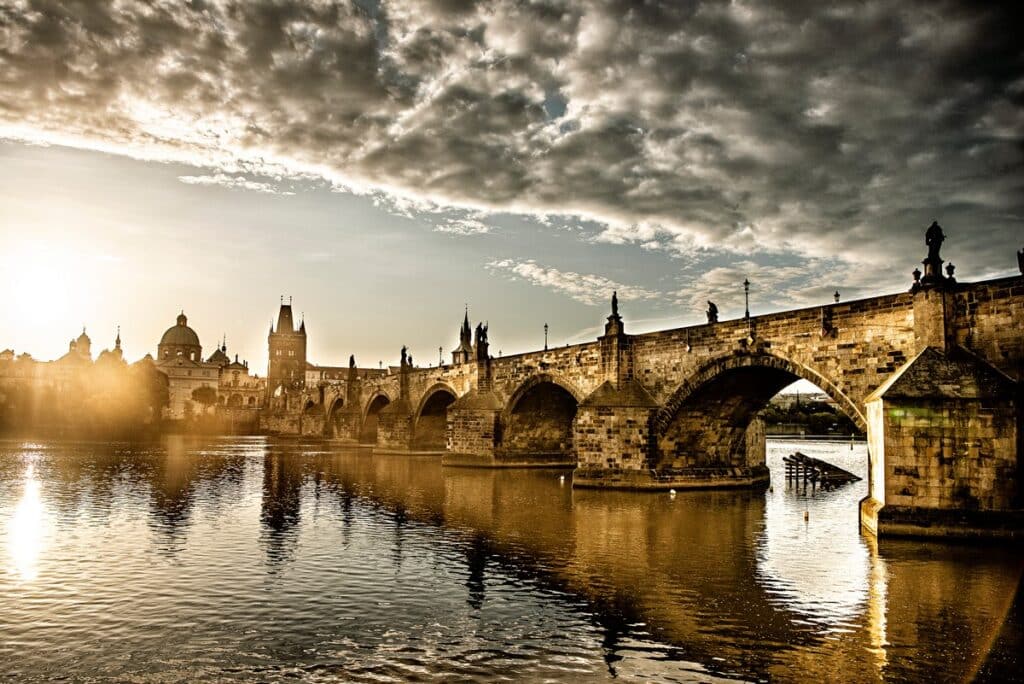
Just like Prague Castle, the Charles Bridge is one of the city’s most iconic monuments. It’s a medieval stone arch bridge that crosses the Vltava river. Today it’s still the oldest bridge over the river as well as being the second oldest in the country.
Construction of the bridge started under the reign of Charles IV in 1357 to replace the previous bridge that floods washed away in 1342. The bridge took significant time to be built and was finally finished in 1402. There are beautiful statutes and points of interest along its 520-meter (1706 feet) span so take your time to admire this as you cross.
Prague’s historic center
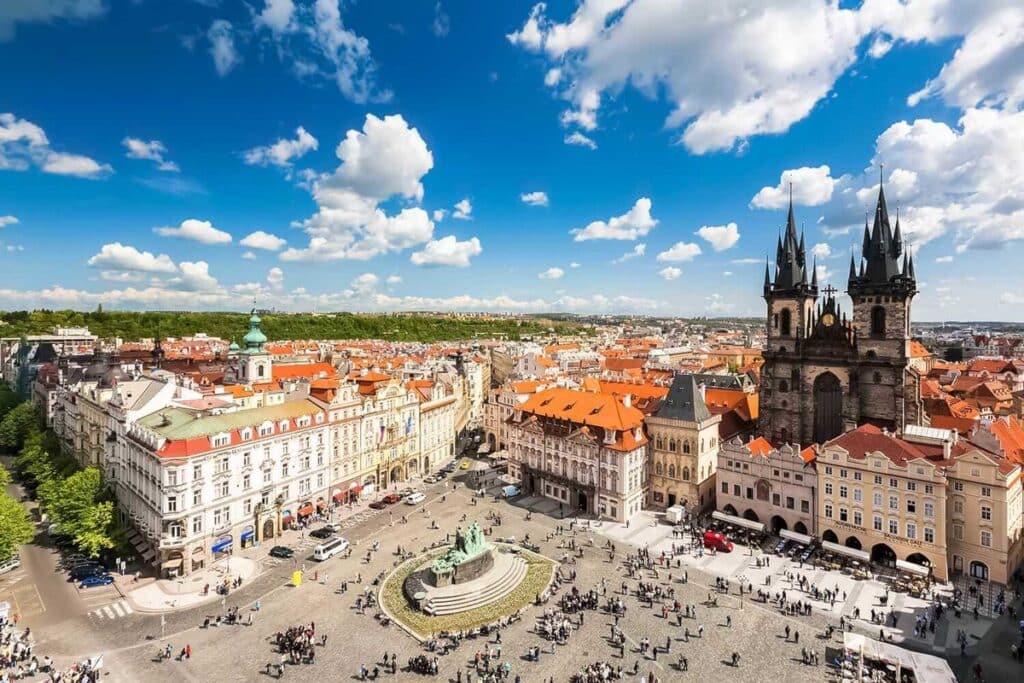
In 1992 UNESCO designated Prague’s historic center a World Heritage Site. Some of the most notable monuments in the area that you shouldn’t miss include the following: the Saint Vitus Cathedral, Hradcany Castle, and the aforementioned Charles Bridge.
Most of these monuments were also built under Charles IV in the 14th century. You can divide the Historic Center into 3 main areas: The Old Town, the Lesser Town, and the New Town. Charles Bridge and the Old Town Square are part of the Old Town. You’ll find Prague Castle in the Lesser Town and Wenceslas Square in the New Town.
Brno
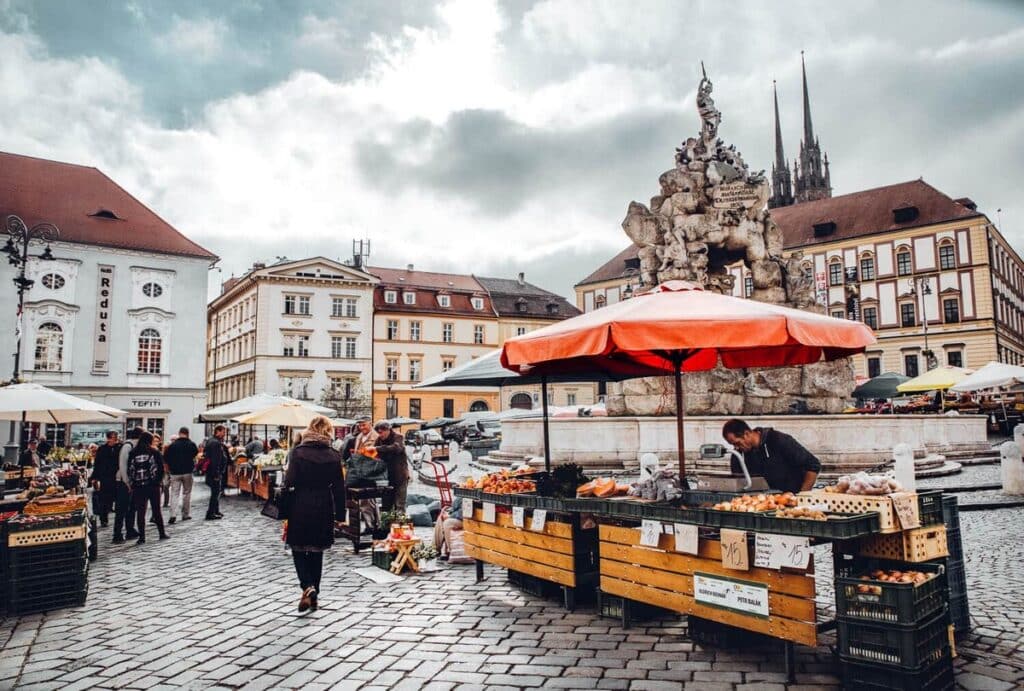
Most tourists to the country don’t stray far from the capital, so if you are looking for a destination that’s less tourist, head to Brno. It’s the country’s second-largest city and offers a number of interesting places to visit.
As Brno is a big student city it’s overall very lively with a bunch of great spots to grab a drink at a very affordable price. There’s also a plethora of cool cafes to choose from.
When visiting check out the excellent museum on Romani culture and the bedazzling artwork at the Moravian Gallery.
Brno Ossuary
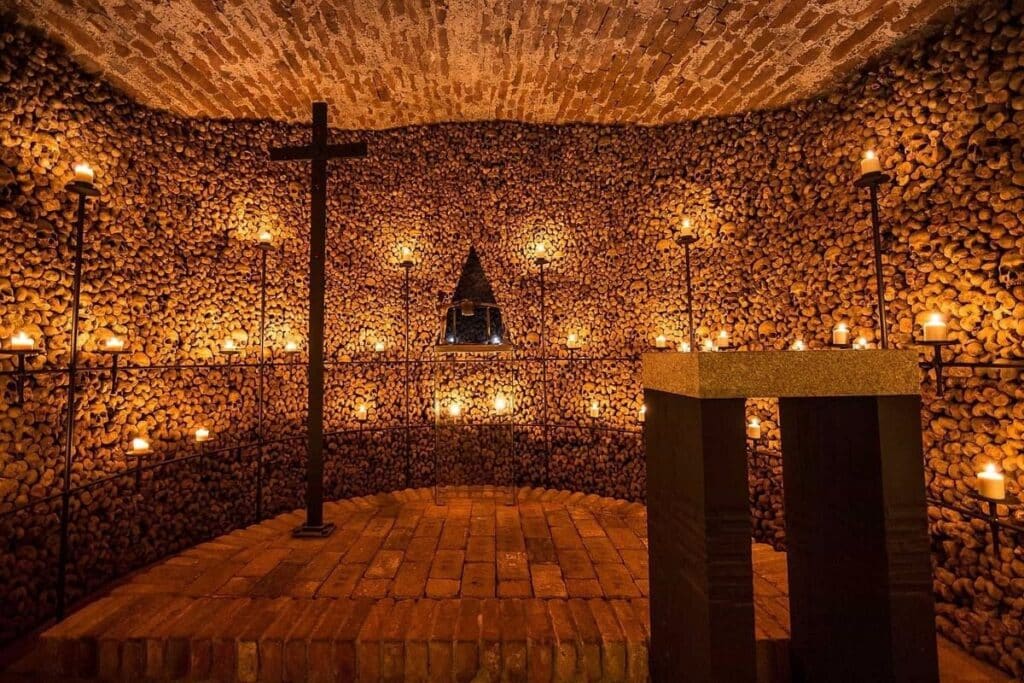
The Ossuary (a container or room in which the bones of dead people are placed) in Brno might not be for the faint-hearted. However, if you dare to check it out, it’s an interesting and very unique attraction.
It’s the second-largest Ossuary in Europe after the one in Paris. It was discovered during a land survey in 2001. Approximately 50 000 people are buried here, and researchers believe that it was the final burial place for victims of the plague, cholera, the Thirty Years’ War, and the Swedish siege.
Prague’s Astronomical Clock (The Orloj)
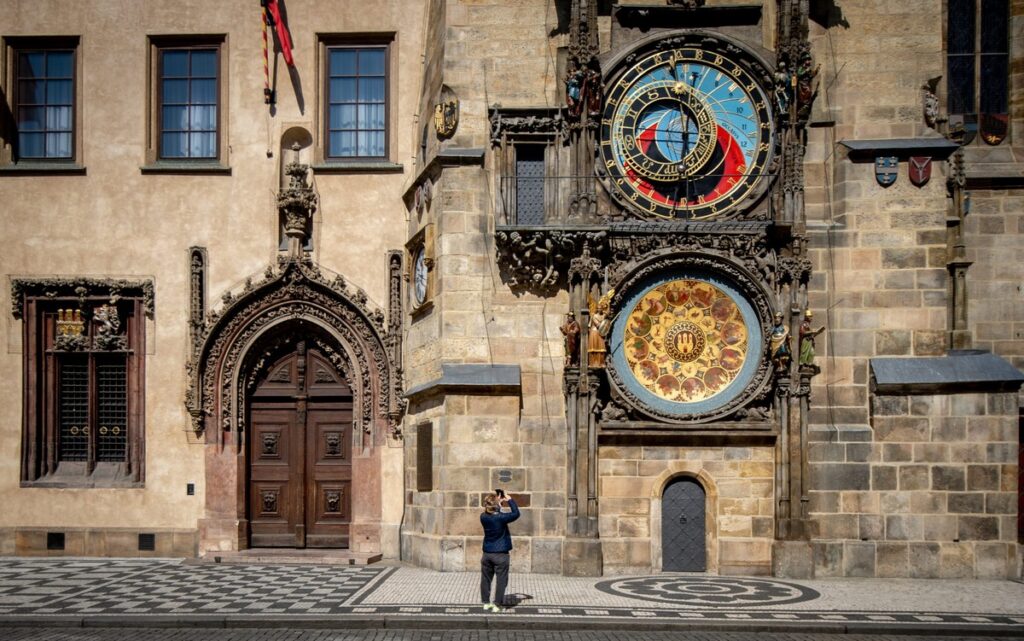
One of Prague’s highlights is seeing the city’s medieval astronomical clock that’s attached to the Old Town Hall. The clock was installed back in 1410, making it the third-oldest astronomical clock in the world and the oldest that’s still working today.
On the hour, the clock provides a little theatre for onlookers, so it’s worth waiting for the little show if you see a group of people crowding around the clock. The clock also shows the Zodiac constellations and the relative positions of the Sun, Moon, and Earth. It also tells you the date and time, of course.
Ceský Krumlov
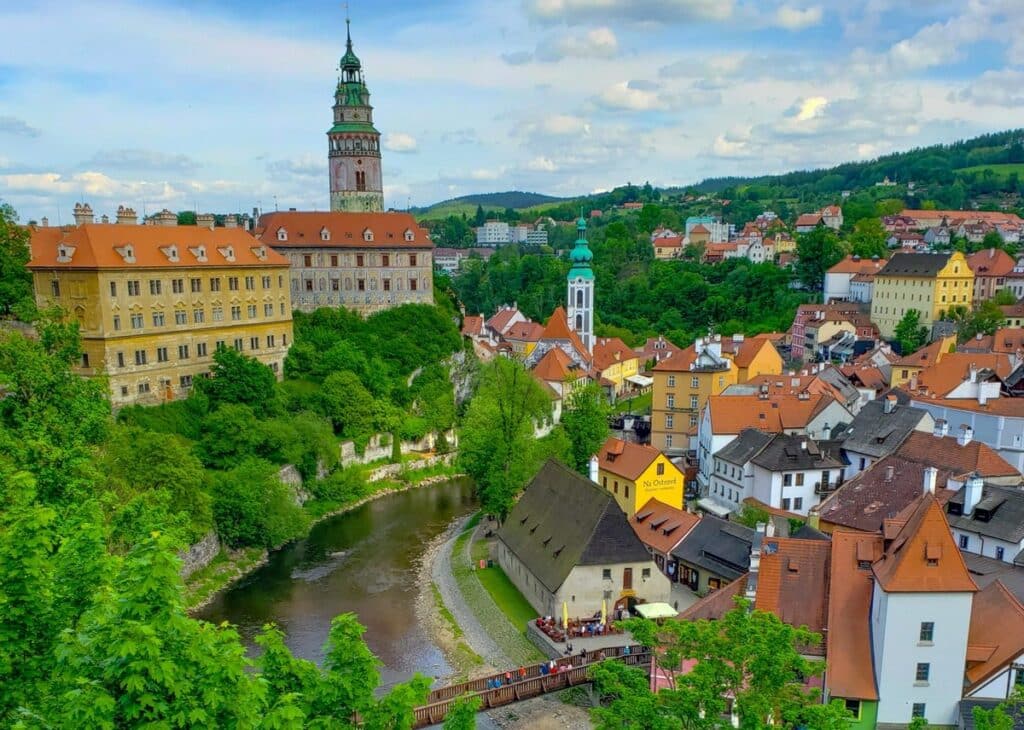
Cesky Krumlov, also known locally as Krumau is a quaint town set in southern Bohemia. Krumau’s highlights include the town’s beautiful Old Town and the 13th-century Český Krumlov Castle. The castle is the country’s second-largest historic building, and the Old Town is a UNESCO World Heritage Site.
The town makes for a popular day trip from Prague. Visitors not only love the romantic old city center but the various breweries and good restaurants dotted all over town. You’ll also find all kinds of galleries and independent boutiques every few steps in the old town.
Kutná Hora
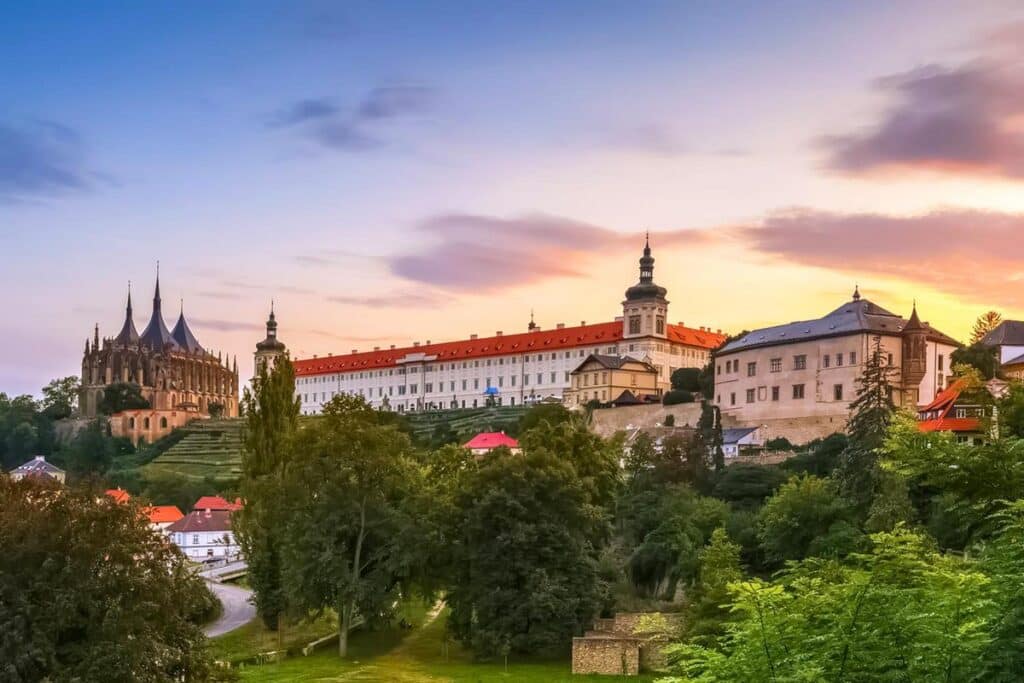
The town of Kutná Hora was designated a UNESCO World Heritage Site in 1995, and many people would recommend the town as one of the spots to visit outside of Prague.
The town’s history is intertwined with the fact that it was once home to one of the biggest silver mines on the continent. It was the profit from this lucrative mine that paid for many of the town’s beautiful structures.
To learn all about the town’s old mining industry, head over to the Czech Museum of Silver and the Stone House to get a glimpse into life during medieval times.
Karlovy Vary (Carlsbad)
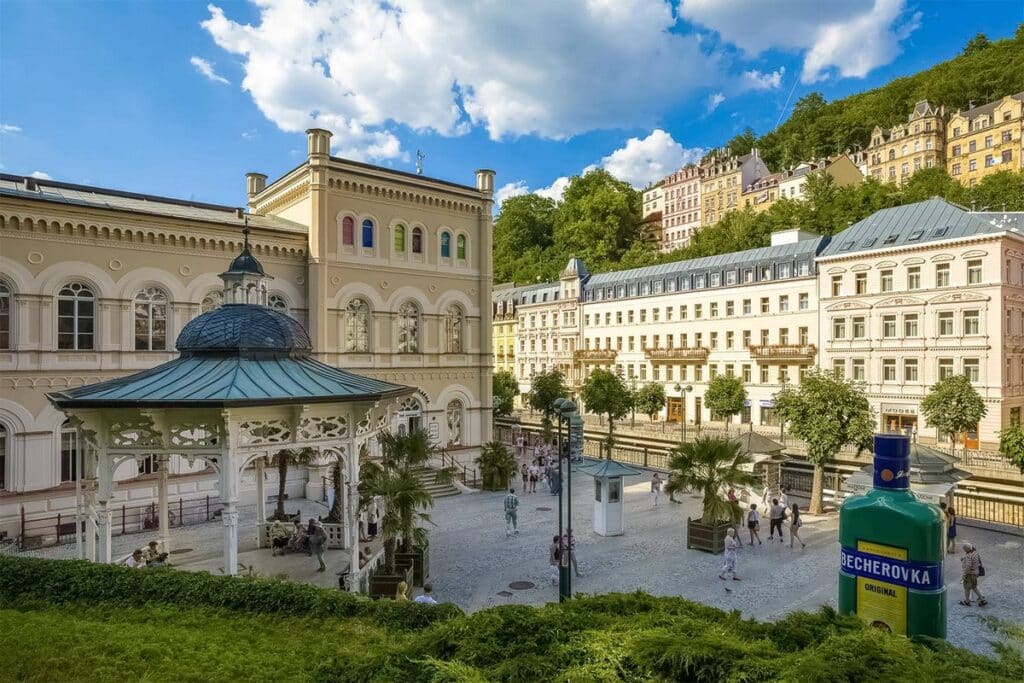
Karlovy Vary is a well-known spa town in the country’s west Bohemian region. The town is known for its numerous thermal springs that have cemented the town’s reputation as a popular resort town since the 19th century.
The town becomes even more beautiful in spring thanks to all the greenery in the town and especially all the cherry blossoms that are then in full bloom.
The town is home to 13 large hot springs as well as smaller ones. Emperor Charles IV founded the town when he visited the springs in the 14th century from a nearby castle.
Konopiste Chateau
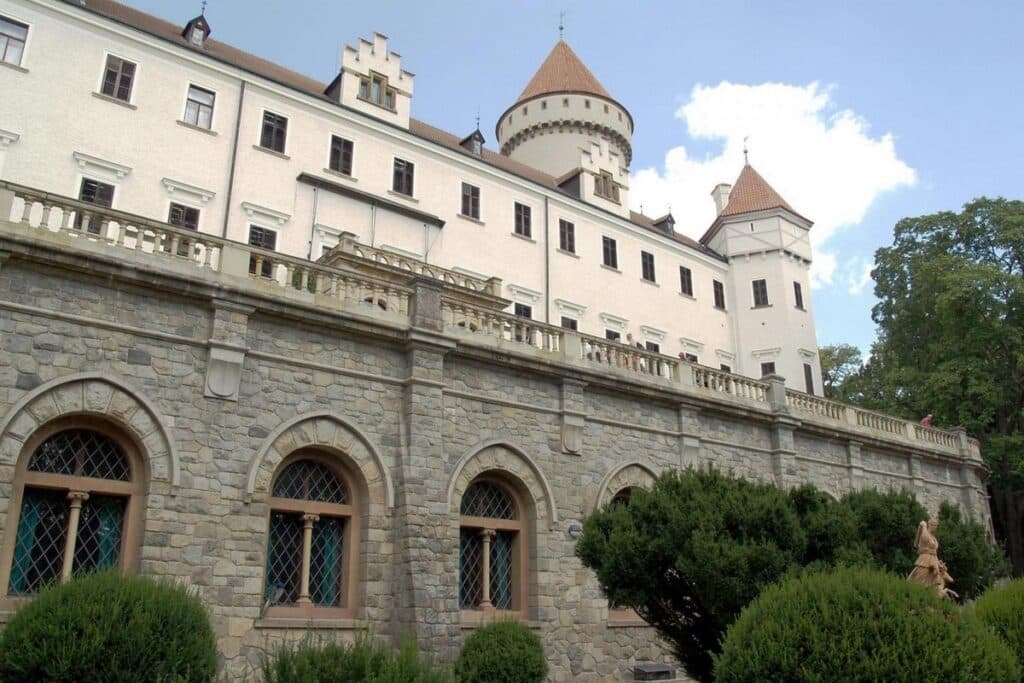
Konopiste Chateau is widely regarded as one of the country’s most beautiful palaces. It dates back to the 13th century, although it took on its current Baroque form in the 18th century.
The palace is also known as the Austrian Archduke Franz Ferdinand’s final residence. For those that can’t immediately place the name, it was his assignation that ultimately started the First World War.
Several of the Archduke’s animal trophies and original artifacts can be seen in the chateau’s museum, as well as the bullet that killed him.
Hluboká Castle (Hluboká nad Vltavou)
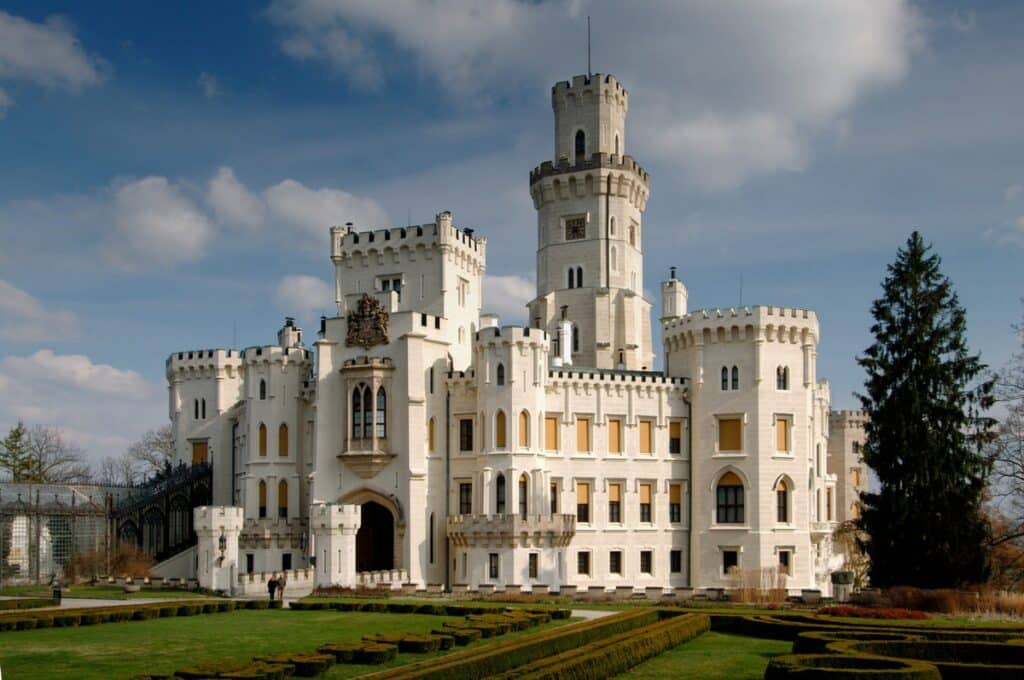
The Neo-Gothic Hluboká Castle is one of the country’s many beautiful castles that are worth a stop. The current castle dates back to the 1660s, although it was built on the site of an older 13th-century fortress.
In subsequent renovations, the castle was updated with elements that led it to loosely resemble England’s, Windsor Castle. Some of the highlights of the castle include its beautiful woodwork and stained glass windows. An extensive collection of art is also on display featuring some of the country’s leading artists.
Bohemian Paradise
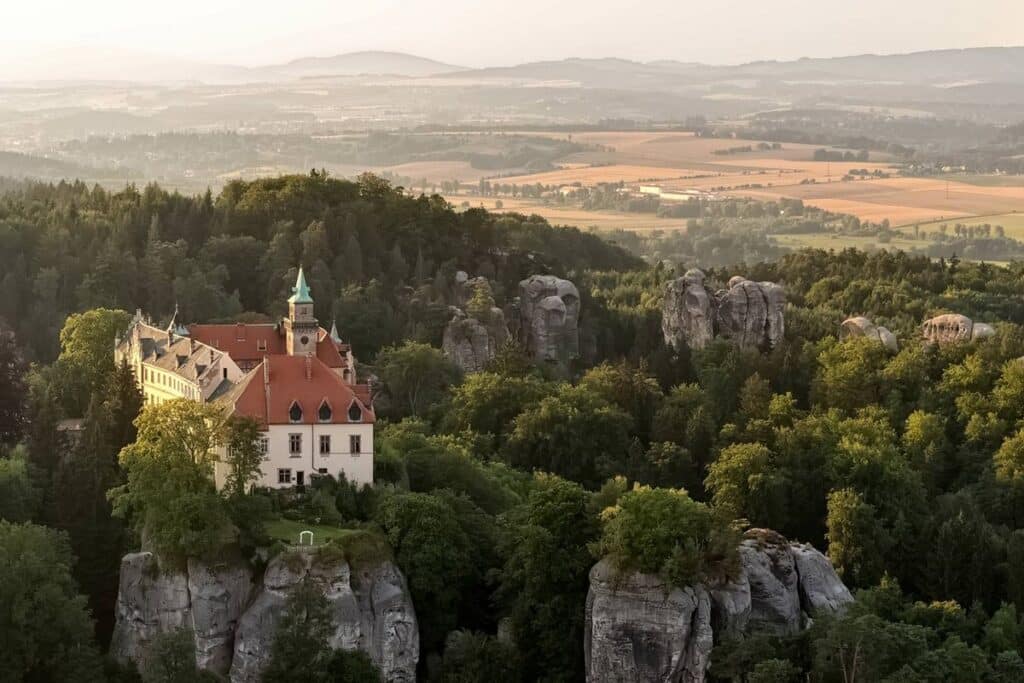
The Bohemian Paradise, known in Czech as Český ráj, is a UNESCO designated landscape with medieval castles, sandstone rock cities, and timbered cottages.
The Bohemian Paradise is located in Eastern Bohemia. It’s an area of outstanding natural beauty thanks to its massive rock formations that have been formed over tens of thousands of years.
Hikers especially flock to this area to hike the numerous trails and enjoy the scenic drives mapped out in the area. There are also well-known old castles to visit if you are in the area. Trotsky Castle and Kost Castle are popular options.
National Library of the Czech Republic
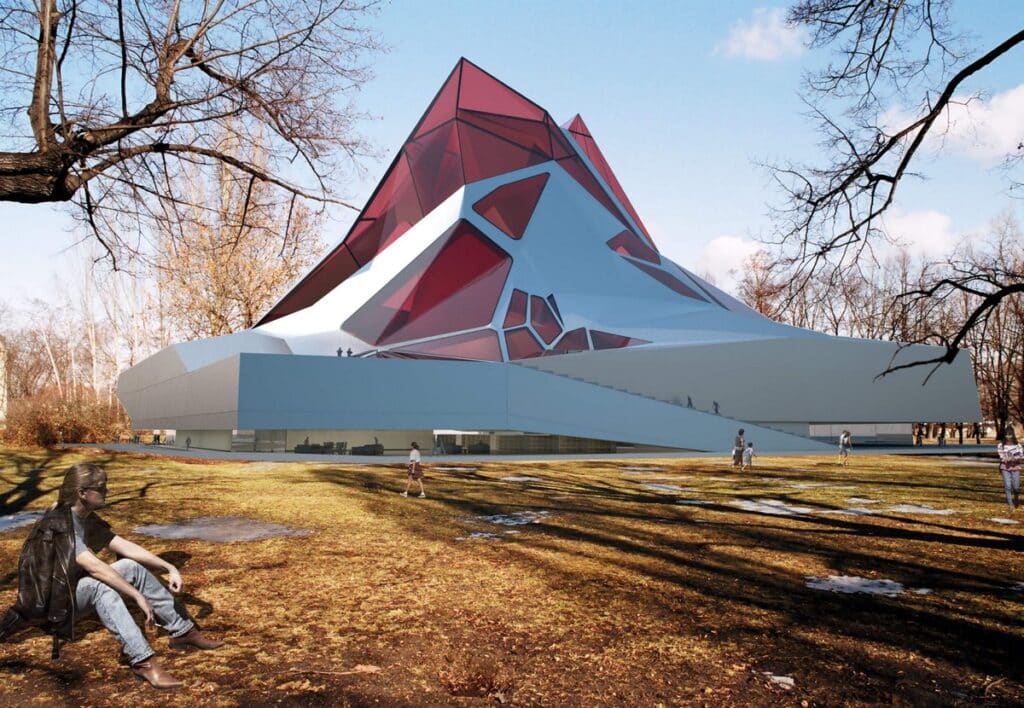
This is no ordinary library, and it might just be one of the most beautiful libraries you will ever see in your life.
You can find this baroque library in the magnificent Clementinum (Klementinum), which sits in the center of historic Prague next to the Charles Bridge. It is one of Europe’s largest complexes of historic Baroque buildings and is home to several points of interest.
As part of the Jesuit University located in Klementinum, the baroque library was first opened in 1722. There are more than 20,000 volumes of primarily foreign theological literature housed here, coming into Klementinum from the late 17th century to the present.
Karlstejn Castle
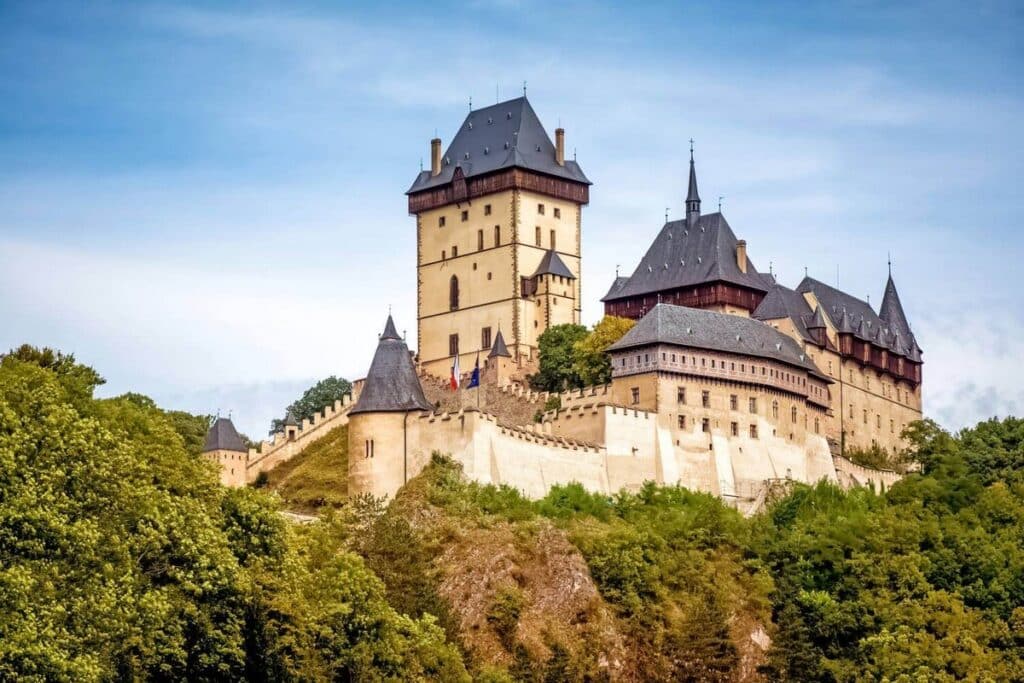
Charles IV built Karlstejn Castle in the period 1348 to 1365. Highlights include the sacred Chapel of the Holy Cross that you’ll find in the Great Tower. The chapel is where Charles IV kept his most prized processions. This included the Roman Empire’s crown jewels as well as other personal possessions.
Other stops to make while visiting the complex are the Imperial Palace and the Marian Tower, as well as the Well Tower, which contains replicas of the Czech and Roman crown jewels.
Wenceslas Squar
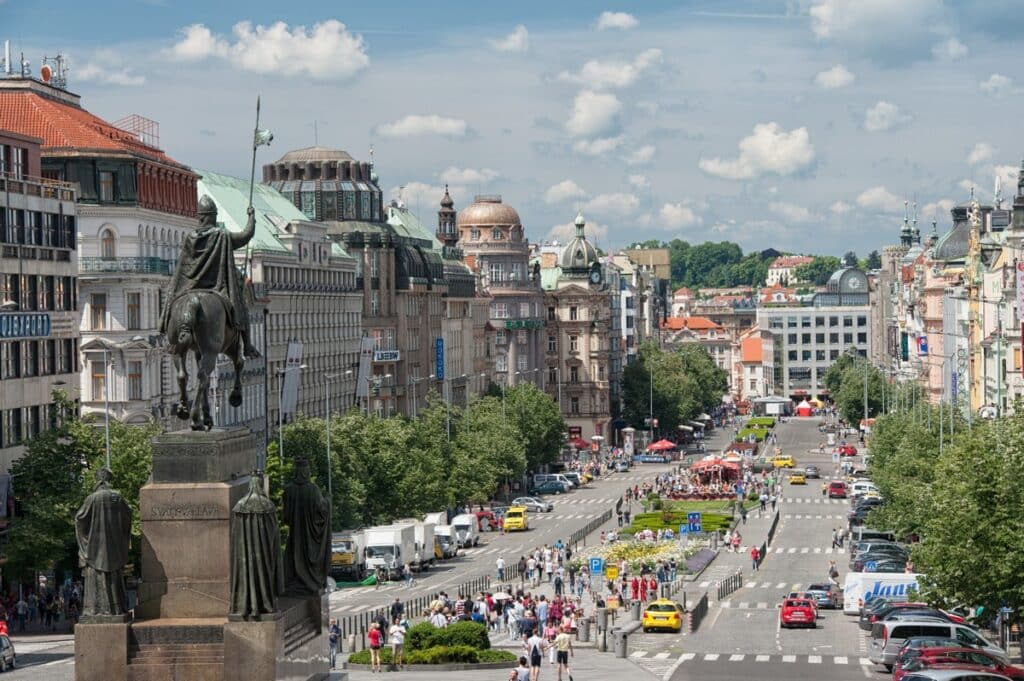
Wenceslas Square is Prague’s commercial and administrative center. It’s also the city’s beating cultural and social heart where you’ll find everything ranging from cinemas to restaurants. This is also where you’ll find all kinds of festivals, parades, and even demonstrations.
The square dates back to the founding of the New Town by Charles IV in 1348.
You’ll also find the statue of the country’s most revered saint here, the patron St Wenceslas as well as the neo-renaissance building of the National Museum. The museum is a popular attraction in the city as it houses an astonishing collection of 14 million items.
World’s Longest Suspension Footbridge
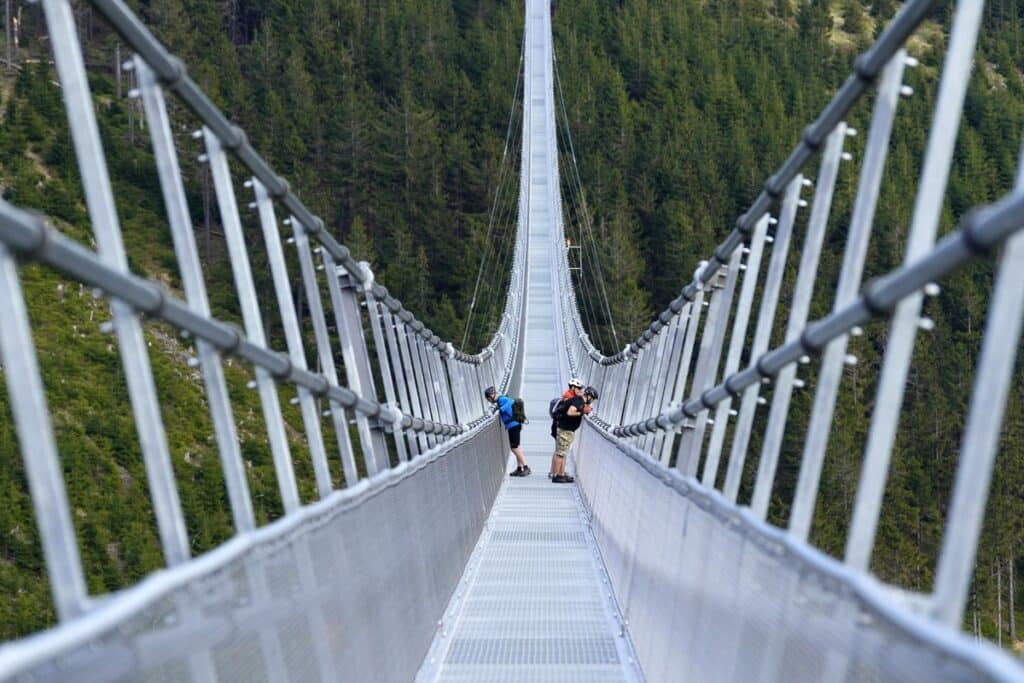
This is the country’s newest attraction and definitely one for thrill-seekers! The world’s longest suspension bridge opened on the 13th of May 2022 in the Dolní Morava vacation resort in the northeast of the Czech Republic.
Here adventures can scale the 721-meter-long-span (2,365 feet) footbridge called the Sky Bridge 721. Stunning views of the cloud-shrouded Jesensky Mountains await those brave enough to attempt to cross this bridge amongst the clouds.
Pruhonice Park
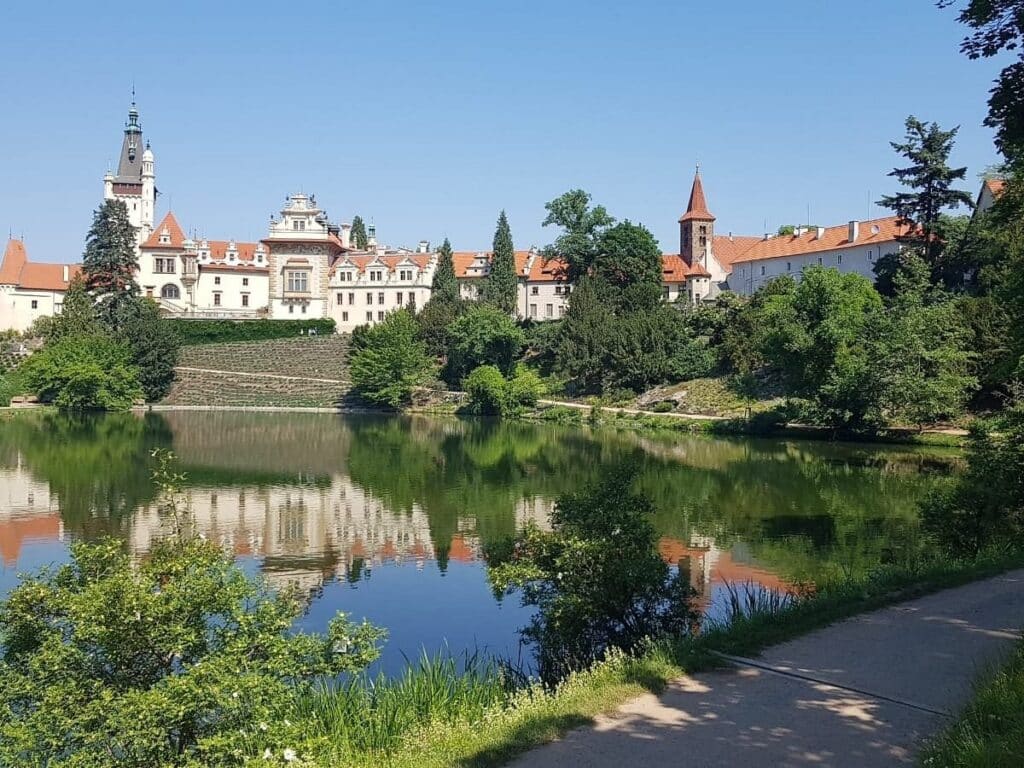
Pruhonice Park and Pruhonice Castle are only a stone away from Prague, making for an easy day trip. The park covers an area of 250 hectares and contains all kinds of streams, ponds, formal gardens, wooded areas, and long walking paths.
The park features an extensive collection of plants as it contains more than 1600 species.
Unfortunately, most of the Greater Castle in the park isn’t open to the public. Instead, it houses a botany institute. However, in the courtyard, you can see statutes, frescoes as well as a replica of the fountain in Prague’s Old Market Square.
The World’s Biggest Beer Drinkers
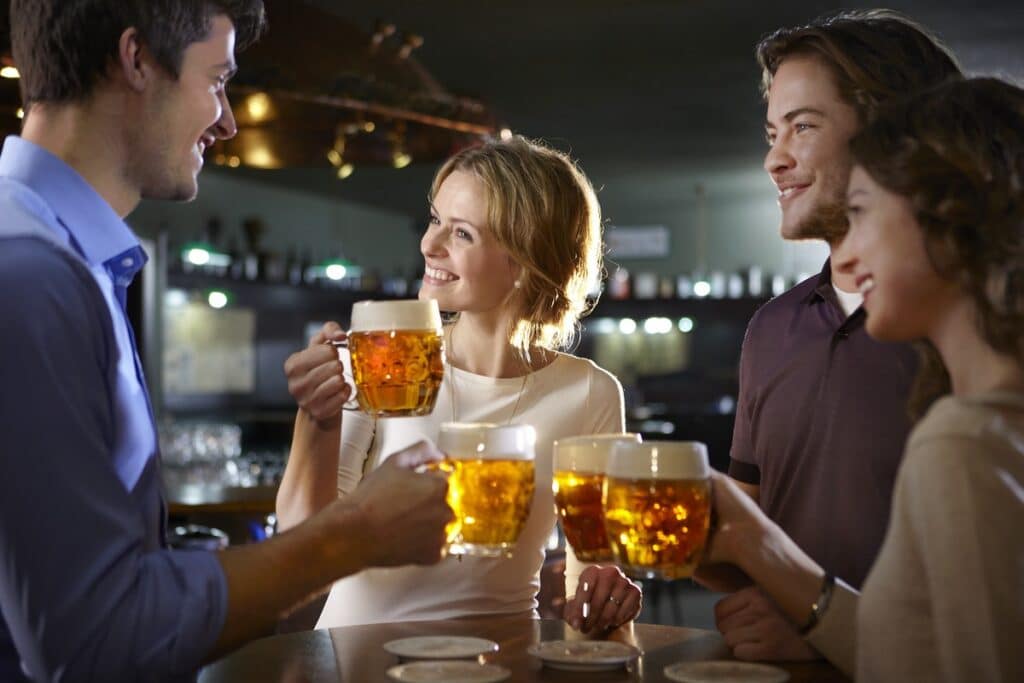
The Czech Republic tops the list as the world’s biggest beer drinkers, with an estimated 143.3 liters (37.8 gallons) consumed per capita. Visitors are usually surprised to find that it’s cheaper to buy beer than water in the country. The Czech Republic is also credited with being the birthplace of the pilsner.
Another fact that catches visitors off guard is that traditional bars serve only one brand of beer. So before you enter a bar, see if there’s a sign outside the pub indicating the type served or risk getting stuck drinking a beer you don’t like the entire evening.
